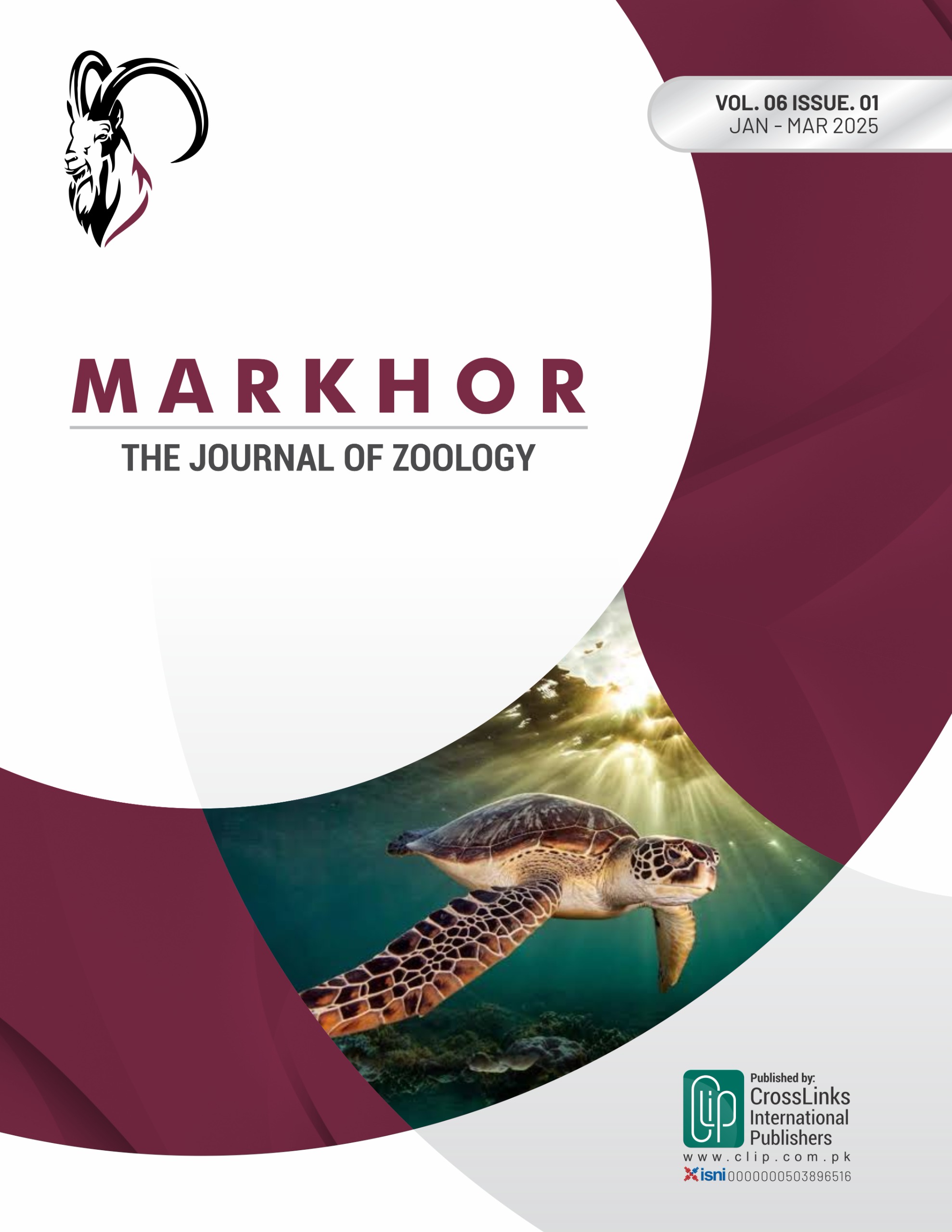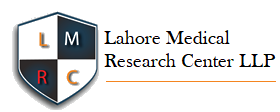Mealworms (Tenebrio molitor L.) as a Substituent of Protein Source for Fisheries and Aquaculture: A Mini Review
Mealworms as a Substituent of Protein Source
DOI:
https://doi.org/10.54393/mjz.v6i1.134Keywords:
Sustainable Feed Sources, Aquaculture, Yellow Mealworms, Fishmeal Substitute, Environmental ImpactAbstract
Development of aquaculture and fisheries depend on the availability of sustainable feed sources. Using insects is one new option that is gaining popularity. The high protein content, rapid growth and little environmental impact of yellow mealworms have made them an appealing solution. Mealworms contain a substantial protein content (47-64%), essential amino acids, energy-dense lipids, and vital micronutrients, making them a viable substitute for traditional protein sources in fisheries and aquaculture. Historically consumed in various cultures, Mealworms have gained attention for their economic and nutritional value. In aquaculture, they enhance fish growth, feed efficiency, and overall health. Studies have shown that incorporating mealworm meal into fish diets improves immune functions, growth performance, and liver health, although excessive inclusion may have adverse effects. The nutritional content of mealworms can be optimized by adjusting rearing conditions, diet, and developmental stage. The European Union's approval of mealworms for human consumption further validates their safety and potential as a sustainable protein source. This review emphasizes the nutritional benefits of mealworms as a substitute for fishmeal, addressing protein shortages and environmental concerns associated with traditional feed production. By integrating mealworms into aquaculture, we can significantly improve sustainability, economic efficiency, and global food security.
References
Dicke M. Insects as feed and the Sustainable Development Goals. Journal of Insects as Food and Feed. 2018 Aug; 4(3): 147-56. doi: 10.3920/JIFF2018.0003.
Sabri NS, Kamardan MI, Wong SX, Azman NF, Akhir FN, Awang N et al. Future aspects of insects' ingestion in Malaysia and Indonesia for human well-being and religion regulation. Future Foods. 2023 Nov: 100267. doi: 10.1016/j.fufo.2023.100267.
Liceaga AM, Aguilar-Toalá JE, Vallejo-Cordoba B, González-Córdova AF, Hernández-Mendoza A. Insects as an alternative protein source. Annual Review of Food Science and Technology. 2022 Mar; 13(1): 19-34. doi: 10.1146/annurev-food-052720-112443.
Van der Fels‐Klerx HJ, Camenzuli L, Belluco S, Meijer N, Ricci A. Food safety issues related to uses of insects for feeds and foods. Comprehensive Reviews in Food Science and Food Safety. 2018 Sep; 17(5): 1172-83. doi: 10.1111/1541-4337.12385.
Baiano A. Edible insects: An overview on nutritional characteristics, safety, farming, production technologies, regulatory framework, and socio-economic and ethical implications. Trends in Food Science & Technology. 2020 Jun; 100:35-50. doi: 10.1016/j.tifs.2020.03.040.
Hartmann C and Siegrist M. Consumer perception and behaviour regarding sustainable protein consumption: A systematic review. Trends in Food Science & Technology. 2017 Mar; 61: 11-25. doi: 10.1016/j.tifs.2016.12.006.
Garofalo C, Milanović V, Cardinali F, Aquilanti L, Clementi F, Osimani A. Current knowledge on the microbiota of edible insects intended for human consumption: A state-of-the-art review. Food Research International. 2019 Nov; 125: 108527. doi: 10.1016/j.foodres.2019.108527.
Olivadese M and Dindo ML. Edible insects: a historical and cultural perspective on entomophagy with a focus on Western societies. Insects. 2023 Aug; 14(8): 690. doi: 10.3390/insects14080690.
Costa-Neto EM and Dunkel FV. Insects as food: history, culture, and modern use around the world. InInsects as sustainable food ingredients 2016 Jan: 29-60. doi: 10.1016/B978-0-12-802856-8.00002-8.
Chung AY, Khen CV, Unchi S, Binti M. Ethnoentomological uses of ants in Sabah, Malaysia. InProceedings of the 2nd ANeT Workshop in Kota Kinabalu. 2000: 1-4.
Eberle S, Schaden LM, Tintner J, Stauffer C, Schebeck M. Effect of temperature and photoperiod on development, survival, and growth rate of mealworms, Tenebrio molitor. Insects. 2022 Mar; 13(4): 321. doi: 10.3390/insects13040321.
Heidari-Parsa S. Determination of yellow mealworm (Tenebrio molitor) nutritional value as an animal and human food supplementation. Arthropods. 2018 Dec; 7(4): 94.
Melis R, Braca A, Mulas G, Sanna R, Spada S, Serra G et al. Effect of freezing and drying processes on the molecular traits of edible yellow mealworm. Innovative Food Science & Emerging Technologies. 2018 Aug; 48: 138-49. doi: 10.1016/j.ifset.2018.06.003.
Siemianowska E, Kosewska A, Aljewicz M, Skibniewska KA, Polak-Juszczak L, Jarocki A et al. Larvae of mealworm (Tenebrio molitor L.) as European novel food. 2013 Apr; 4(6): 5. doi: 10.4236/as.2013.46041.
Oonincx DG and De Boer IJ. Environmental impact of the production of mealworms as a protein source for humans-a life cycle assessment. PLOS One. 2012 Dec; 7(12): e51145. doi: 10.1371/journal.pone.0051145.
Veldkamp T and Bosch G. Insects: a protein-rich feed ingredient in pig and poultry diets. Animal Frontiers. 2015 Apr; 5(2): 45-50. doi: 10.2527/af.2015-0019.
Hong J, Han T, Kim YY. Mealworm (Tenebrio molitor Larvae) as an alternative protein source for monogastric animal: A review. Animals. 2020 Nov; 10(11): 2068. doi: 10.3390/ani10112068.
Grau T, Vilcinskas A, Joop G. Sustainable farming of the mealworm Tenebrio molitor for the production of food and feed. Zeitschrift für Naturforschung C. 2017 Sep; 72(9-10): 337-49. doi: 10.1515/znc-2017-0033.
Dernekbaşi S, K. B. Yellow mealworm (TM) as an alternative protein source in fish feed. Journal of Aquaculture and Marine Biology. 2024; 13(3): 121-122. doi: 10.15406/jamb.2024.13.00406.
Aragão C, Gonçalves AT, Costas B, Azeredo R, Xavier MJ, Engrola S. Alternative proteins for fish diets: Implications beyond growth. Animals. 2022 May; 12(9): 1211. doi: 10.3390/ani12091211.
Nogales‐Mérida S, Gobbi P, Józefiak D, Mazurkiewicz J, Dudek K, Rawski M et al. Insect meals in fish nutrition. Reviews in Aquaculture. 2019 Nov; 11(4): 1080-103. doi: 10.1111/raq.12281.
Ravzanaadii N, Kim SH, Choi WH, Hong SJ, Kim NJ. Nutritional value of mealworm, Tenebrio molitor as food source. International Journal of Industrial Entomology. 2012 Sep; 25(1): 93-8. doi: 10.7852/ijie.2012.25.1.093.
Bogusz R, Bryś J, Onopiuk A, Pobiega K, Tomczak A, Kowalczewski PŁ et al. The impact of drying methods on the quality of blanched yellow mealworm (Tenebrio molitor L.) larvae. Molecules. 2024 Aug; 29(15): 3679. doi: 10.3390/molecules29153679.
Noyens I, Van Peer M, Goossens S, Ter Heide C, Van Miert S. The Nutritional Quality of Commercially Bred Yellow Mealworm (Tenebrio molitor) Compared to European Union Nutrition Claims. Insects. 2024 Oct; 15(10): 769. doi: 10.3390/insects15100769.
Ghosh S, Lee SM, Jung C, Meyer-Rochow VB. Nutritional composition of five commercial edible insects in South Korea. Journal of Asia-Pacific Entomology. 2017 Jun; 20(2): 686-94. doi: 10.1016/j.aspen.2017.04.003.
Chen H, Yu J, Ran X, Wu J, Chen Y, Tan B et al. Effects of yellow mealworm (Tenebrio molitor) on growth performance, hepatic health and digestibility in juvenile largemouth bass (Micropterus salmoides). Animals. 2023 Apr; 13(8): 1389. doi: 10.3390/ani13081389.
Gu J, Liang H, Ge X, Xia D, Pan L, Mi H et al. A study of the potential effect of yellow mealworm (Tenebrio molitor) substitution for fish meal on growth, immune and antioxidant capacity in juvenile largemouth bass (Micropterus salmoides). Fish & Shellfish Immunology. 2022 Jan; 120: 214-21. doi: 10.1016/j.fsi.2021.11.024.
Ido A, Hashizume A, Ohta T, Takahashi T, Miura C, Miura T. Replacement of fish meal by defatted yellow mealworm. Animals: an Open Access Journal from MDPI. 2019 Feb; 9(3). doi: 10.3390/ani9030100.
Zhang Z, Yuan J, Tian S, Wu Y, Liu Y, Zhou H et al. Effects of dietary vitamin E supplementation on growth, feed utilization and flesh quality of large yellow croaker Larimichthys crocea fed with different levels of dietary yellow mealworm Tenebrio molitor meal. Aquaculture. 2022 Mar; 551: 737954. doi: 10.1016/j.aquaculture.2022.737954.
Vandeweyer D, Lenaerts S, Callens A, Van Campenhout L. Effect of blanching followed by refrigerated storage or industrial microwave drying on the microbial load of yellow mealworm larvae (Tenebrio molitor). Food Control. 2017 Jan; 71: 311-4. doi: 10.1016/j.foodcont.2016.07.011.
Kröncke N, Grebenteuch S, Keil C, Demtröder S, Kroh L, Thünemann AF et al. Effect of different drying methods on nutrient quality of the yellow mealworm (Tenebrio molitor L.). Insects. 2019 Mar; 10(4): 84. doi: 10.3390/insects10040084.
Bußler S, Rumpold BA, Jander E, Rawel HM, Schlüter OK. Recovery and techno-functionality of flours and proteins from two edible insect species: Meal worm (Tenebrio molitor) and black soldier fly (Hermetia illucens) larvae. Heliyon. 2016 Dec; 2(12). doi: 10.1016/j.heliyon.2016.e00218.
Thévenot A, Rivera JL, Wilfart A, Maillard F, Hassouna M, Senga-Kiesse T et al. Mealworm meal for animal feed: Environmental assessment and sensitivity analysis to guide future prospects. Journal of Cleaner Production. 2018 Jan; 170: 1260-7. doi: 10.1016/j.jclepro.2017.09.054.
Selaledi L, Mbajiorgu CA, Mabelebele M. The use of yellow mealworm (T. molitor) as alternative source of protein in poultry diets: a review. Tropical animal health and production. 2020 Jan; 52: 7-16. doi: 10.1007/s11250-019-02033-7.
Shafique L, Abdel-Latif HM, Hassan FU, Alagawany M, Naiel MA, Dawood MA, Yilmaz S, Liu Q. The feasibility of using yellow mealworms (Tenebrio molitor): Towards a sustainable aquafeed industry. Animals. 2021 Mar; 11(3): 811. doi: 10.3390/ani11030811.
Downloads
Published
How to Cite
Issue
Section
License
Copyright (c) 2025 MARKHOR (The Journal of Zoology)

This work is licensed under a Creative Commons Attribution 4.0 International License.
This is an open-access journal and all the published articles / items are distributed under the terms of the Creative Commons Attribution License, which permits unrestricted use, distribution, and reproduction in any medium, provided the original author and source are credited. For comments editor@markhorjournal.com











